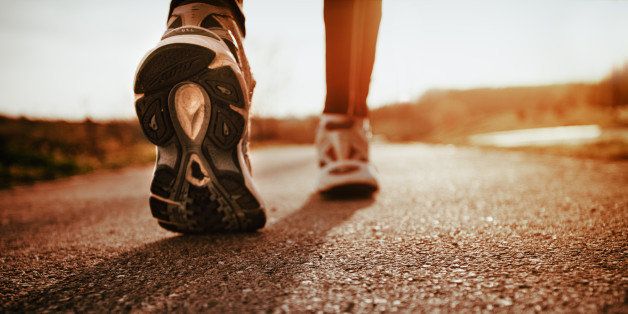
We've always known walking is good for us -- it burns calories, reduces stress and helps the environment.
But we never knew how really great it is for us until the new Call to Action on Walking from U.S. Surgeon General Vivek H. Murthy, who explains, "An average of 22 minutes a day of physical activity -- such as brisk walking - can significantly reduce the risk of heart disease and diabetes."
Surgeon General Murthy recently announced a national campaign to encourage Americans to walk more and make all communities safer and easier for walking, and appeared live on Huffington Post to talk about how his office will work to meet these goals.
A major study released this year shows that lack of exercise is twice as deadly as obesity, according to Cambridge University researchers who studied more than 300,000 people over 12 years.
This explains why the Surgeon General and a growing chorus of health care experts are singing the praises of walking.
The federal Centers for Disease Control and Protection (CDC) recommends Americans walk at least 30 minutes a day five days a week -- or bike, run, swim, dance, garden do aerobics and play sports. (For kids, it's 60 minutes a day seven days a week.)
"You don't have to be an athlete to be physically active, just walk, walk, walk!" says Bernard J. Tyson, president of Kaiser Permanente, one of America's largest health care providers.
Walking stands out as Americans' favorite aerobic activity because it's free, easy, available anywhere -- and, most of all -- it's fun. Six in 10 Americans take a walk at least once a week, according to the Centers for Disease Control and Prevention (CDC), and the number of Americans walking has risen six percent since 2005. That adds up to 20 million more people on their feet.
Good For Your Health -- But Also For Your Pocketbook and the Local Economy
The rising tide of walkers across America brings us other benefits too.
More social connections: Walking fosters strong social connections that improve both our physical and mental health.
Stronger communities: "Exercise is medicine. It's also good for the social fabric of our communities," says former Dr. Regina Benjamin, US Surgeon General from 2009 to 2013, explaining why she added a walking path to the grounds of her health clinic in rural Alabama.
A stronger economy: "Walking is a business issue. A healthy workforce means a more successful workforce," says Karen Marlo vice-president of the National Business Group on Health, a consortium of leading companies across many fields.
Lower cost of living: Transportation costs rival housing costs for many American families today, especially those living in places where it is hard get around without a car (25 percent of household expenses) compared to walkable communities (9 percent), according to the Federal Highway Administration. Even with lower gas prices, the yearly costs of a owning and operating a car at $8698, which means that figuring out how to walk more and drive less makes economic sense, according to the American Automobile Association.
Getting America Back on Its Feet
In light of all this evidence, it's clear that walking is a healthy, economical, sociable, pleasurable thing to do. Yet fewer than half of us meet the CDC's weekly minimum for walking or any other physical activity -- 30 minutes a day five days a week.
Americans walk less than people in most other countries. In fact, Australians walk almost twice as many steps each day as we do, a surprise in a country that is similar to the US with high rates of car ownership and spread-out suburban development.
"Everyone deserves to have a safe place to walk or wheelchair roll," says Surgeon General Murthy . "But in too many of our communities, that is not the reality."
To get Americans back on their feet --to enjoy better health and other rewards-- we need to make strolling and striding a natural part of daily life again. This can be accomplished by removing the personal and physical barriers that discourage us from walking for recreation, relaxation, and transportation.
Most Americans support significant changes in our communities to promote this goal, according to the survey sponsored by Kaiser Permanente. Eighty percent "want to design streets to make walking safer" (even if it means driving slower); 71 percent "want better enforcement of speed limits" (even if it means driving slower), and 54 percent "want communities where destinations are within walk distance" (even if it means building homes closer together).
These steps are popular because they are not some radical upheaval of our way of life, but a common-sense readjustment. Walking has always been one of the most elemental human acts, central to our lives the same as breathing, eating and sleeping. Making streets and neighborhoods more safe, convenient, comfortable and interesting for people traveling on foot (or rolling in wheelchairs) is a sensible return to traditional values. It not only enhance our health, but enriches our lives by better connecting us to people and places in our communities.